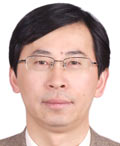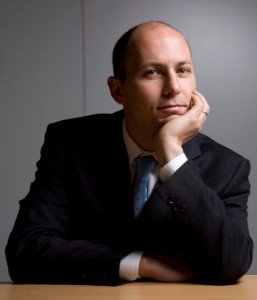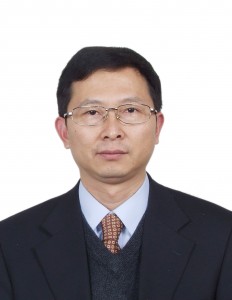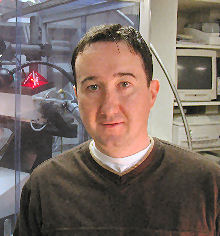From 1st May 2011, researchers working in the area of nanocrystals will have a new option for submitting their articles to CrystEngComm.
Professor Shu-Hong Yu, based at the University of Science & Technology of China in Hefei and the National Laboratory for Physical Sciences at Microscale, China, has recently been appointed as a CrystEngComm Associate Editor, with his Editorial Office opening 1st May.

Associate Editor, Professor Shu-Hong Yu
Shu-Hong studied chemistry at the Hefei University of Technology and received his first degree in 1988. He studied at the Shanghai Research Institute of Chemical Industry (SRICI), and then moved to the University of Science and Technology of China, where he was awarded his PhD. From 1999 to 2001, he worked in Materials and Structures Laboratory, Tokyo Institute of Technology, and was later awarded an Alexander von Humboldt Foundation Fellowship (2001-2002) in the Max Planck Institute of Colloids and Interfaces, Germany, working with Prof. Dr. Markus Antonietti and PD Habil Dr. Helmut Cölfen. He joined the Hefei National Laboratory for Physical Sciences at Microscale (HFNL) in 2003.
Currently, he leads the Division of Nanomaterials & Chemistry, HFNL, and also is the acting Deputy Dean of the School of Chemistry & Materials, University of Science and Technology of China.
Shu-Hong’s research interests include bio-inspired synthesis and self-assembly of advanced inorganic materials; templated-directed organization of nanoparticles; novel inorganic synthesis; the synthesis of biominerals and their applications; and the optical, electronic, magnetic, and catalytic properties of low dimensional nanostructured materials. Find out more about Shu-Hong’s research at his website and check out some of his recent papers below:
Confined crystallization of polycrystalline high-magnesium calcite from compact Mg-ACC precursor tablets and its biological implications
Jun Jiang, Min-Rui Gao, Yun-Hao Qiu, Guang-Sheng Wang, Lei Liu, Guo-Bin Cai and Shu-Hong Yu
CrystEngComm, 2011, 13, 952-956, DOI: 10.1039/C0CE00153H
From (Cd2Se2)(pa) (pa = propylamine) hybrid precursors to various CdSe nanostructures: structural evolution and optical properties
Hong-Bin Yao, Xiao Zhang, Xiao-Han Wang, Shu-Hong Yu and Jing Li
Dalton Trans., 2011, 40, 3191-3197, DOI: 10.1039/C0DT01351J
Mineralization of calcite ribbons on an Allium fistulosum L. bulb inner membrane in an ethanol–water mixed solvent under control of polyacrylic acid by a double diffusion method
Lei Liu, Bo Hu, Shao-Feng Chen, Shu-Juan Liu, Jun Jiang, Guo-Bin Cai and Shu-Hong Yu
CrystEngComm, 2010, 12, 3593-3598, DOI: 10.1039/C002697B
Controlled crystallization of hierarchical and porous calcium carbonate crystals using polypeptide type block copolymer as crystal growth modifier in a mixed solution
Xiaohui Guo, Lei Liu, Wanv Wang, Ji Zhang, Yaoyu Wang and Shu-Hong Yu
CrystEngComm, 2011, 13, 2054-2061, DOI: 10.1039/C0CE00202J
Hierarchical assembly of micro-/nano-building blocks: bio-inspired rigid structural functional materials
Hong-Bin Yao, Hai-Yu Fang, Xiao-Han Wang and Shu-Hong Yu
Chem. Soc. Rev., 2011, Advance Article, DOI: 10.1039/C0CS00121J
Shu-Hong joins the journal’s two existing Associate Editors, Professor Christer Aakeroy based at Kansas State University, USA and Professor Song Gao at Peking University, China.
Articles for consideration by Shu-Hong Yu can be submitted here.















